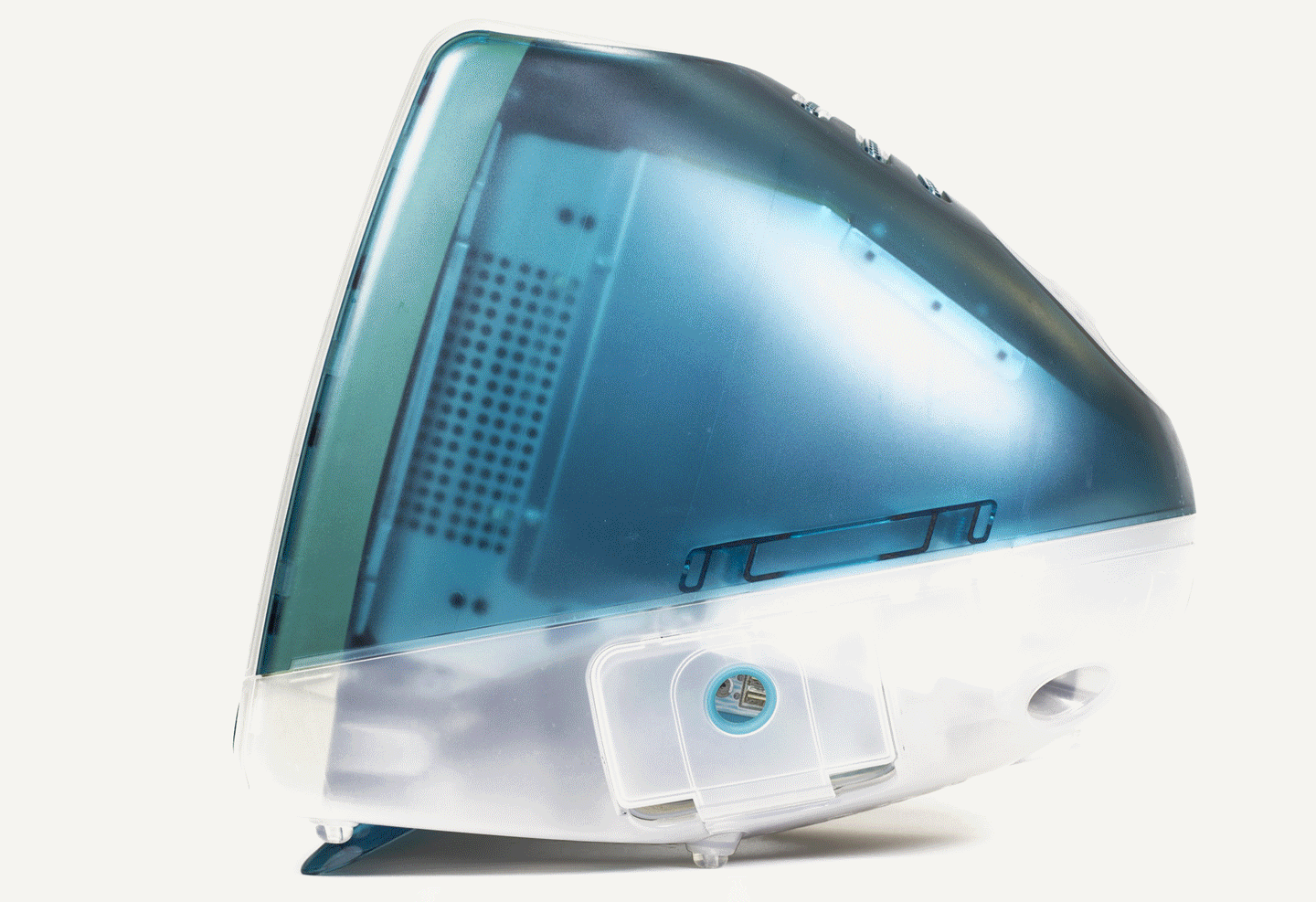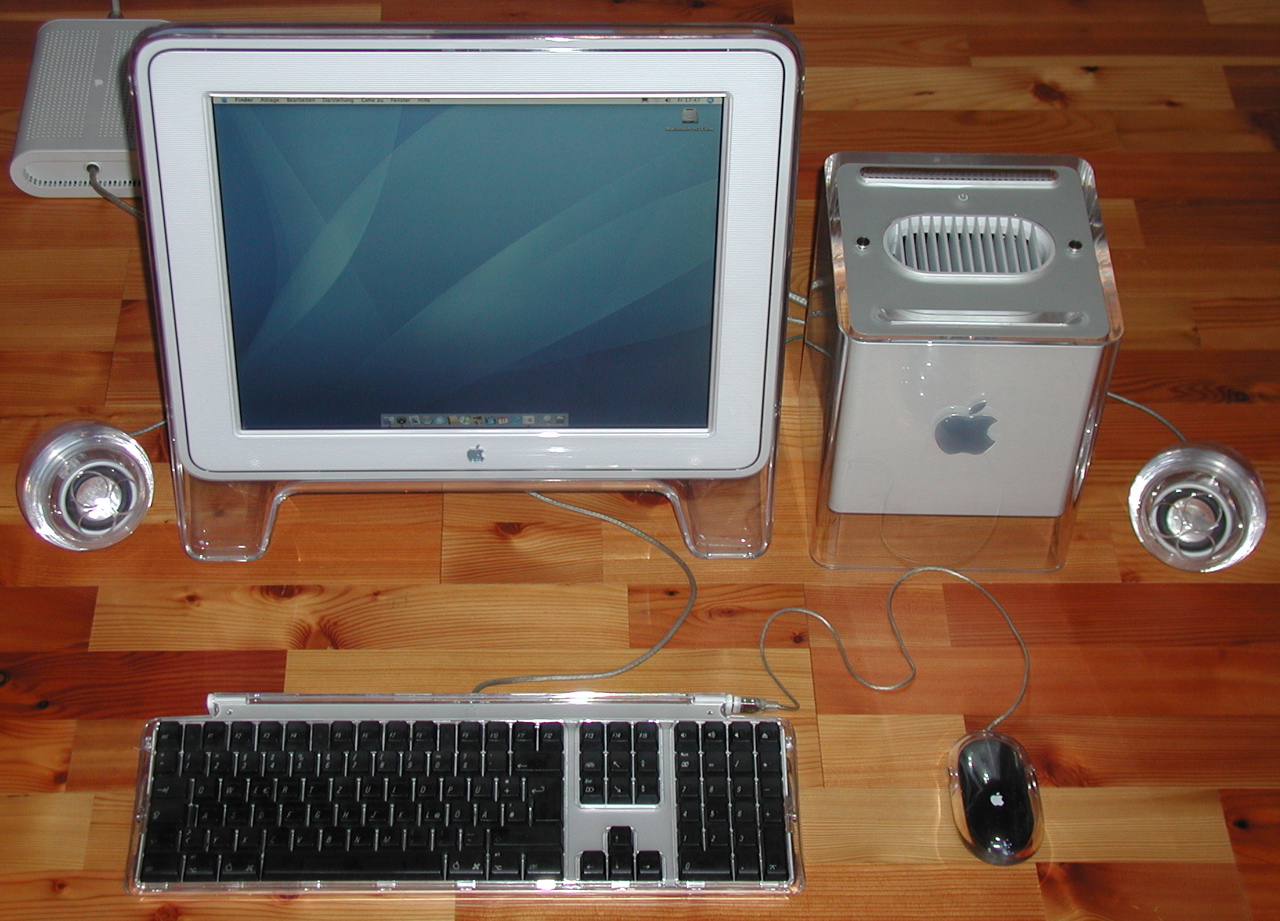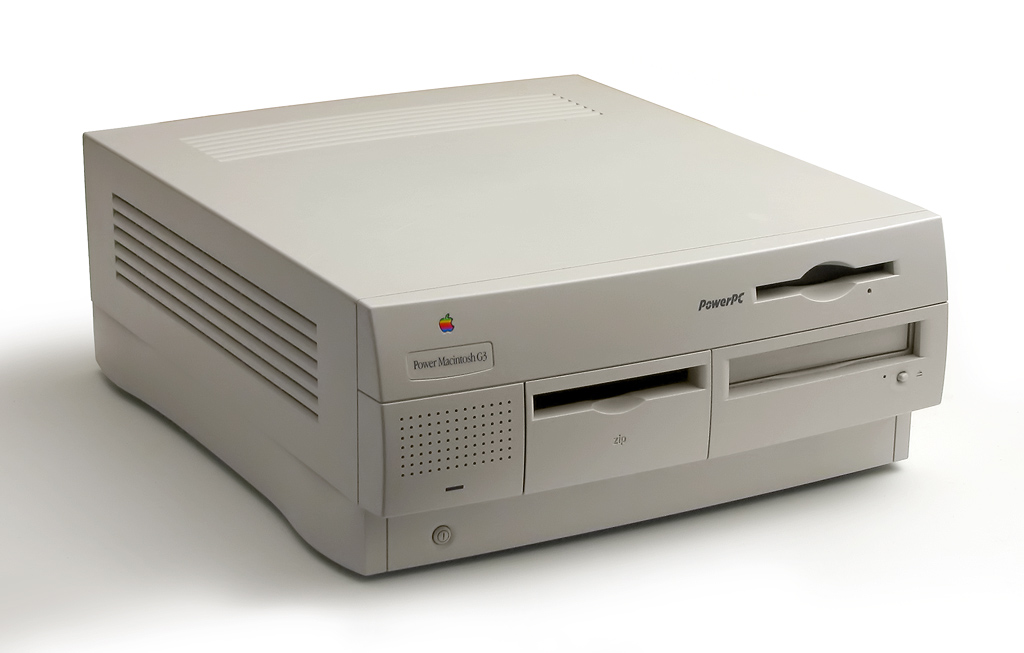|
Mac OS X 10.1
Mac OS X 10.1 (code named Puma) is the second major release of macOS, Apple's desktop and server operating system. It superseded Mac OS X 10.0 and preceded Mac OS X Jaguar. Mac OS X 10.1 was released on September 25, 2001, as a free update for Mac OS X 10.0 users. The operating system was handed out for no charge by Apple employees after Steve Jobs' keynote speech at the Seybold publishing conference in San Francisco. It was subsequently distributed to Mac users on October 25, 2001, at Apple Stores and other retail stores that carried Apple products. System requirements Supported computers: * Power Mac G3 * Power Mac G4 * Power Mac G4 Cube * iMac G3 * eMac * PowerBook G3, except for the original PowerBook G3 * PowerBook G4 * iBook RAM: *128 megabytes (MB) (unofficially 64 MB minimum) Hard Drive Space: *1.5 gigabytes (GB) Features Apple introduced many features that were missing from the previous version, as well as improving overall system performance. ... [...More Info...] [...Related Items...] OR: [Wikipedia] [Google] [Baidu] |
MacOS
macOS (; previously OS X and originally Mac OS X) is a Unix operating system developed and marketed by Apple Inc. since 2001. It is the primary operating system for Apple's Mac (computer), Mac computers. Within the market of desktop and laptop computers it is the Usage share of operating systems#Desktop and laptop computers, second most widely used desktop OS, after Microsoft Windows and ahead of ChromeOS. macOS succeeded the classic Mac OS, a Mac operating system with nine releases from 1984 to 1999. During this time, Apple cofounder Steve Jobs had left Apple and started another company, NeXT Computer, NeXT, developing the NeXTSTEP platform that would later be acquired by Apple to form the basis of macOS. The first desktop version, Mac OS X 10.0, was released in March 2001, with its first update, 10.1, arriving later that year. All releases from Mac OS X Leopard, Mac OS X 10.5 Leopard and after are UNIX 03 certified, with an exception for OS X Lion, OS X 10. ... [...More Info...] [...Related Items...] OR: [Wikipedia] [Google] [Baidu] |
Publishing
Publishing is the activity of making information, literature, music, software and other content available to the public for sale or for free. Traditionally, the term refers to the creation and distribution of printed works, such as books, newspapers, and magazines. With the advent of digital information systems, the scope has expanded to include electronic publishing such as ebooks, academic journals, micropublishing, websites, blogs, video game publishing, and the like. Publishing may produce private, club, commons or public goods and may be conducted as a commercial, public, social or community activity. The commercial publishing industry ranges from large multinational conglomerates such as Bertelsmann, RELX, Pearson and Thomson Reuters to thousands of small independents. It has various divisions such as trade/retail publishing of fiction and non-fiction, educational publishing (k-12) and academic and scientific publishing. Publishing is also undertaken by governments ... [...More Info...] [...Related Items...] OR: [Wikipedia] [Google] [Baidu] |
Megabyte
The megabyte is a multiple of the unit byte for digital information. Its recommended unit symbol is MB. The unit prefix ''mega'' is a multiplier of (106) in the International System of Units (SI). Therefore, one megabyte is one million bytes of information. This definition has been incorporated into the International System of Quantities. In the computer and information technology fields, other definitions have been used that arose for historical reasons of convenience. A common usage has been to designate one megabyte as (220 B), a quantity that conveniently expresses the binary architecture of digital computer memory. The standards bodies have deprecated this usage of the megabyte in favor of a new set of binary prefixes, in which this quantity is designated by the unit mebibyte (MiB). Definitions The unit megabyte is commonly used for 10002 (one million) bytes or 10242 bytes. The interpretation of using base 1024 originated as technical jargon for the byte multiples that ... [...More Info...] [...Related Items...] OR: [Wikipedia] [Google] [Baidu] |
IBook
iBook is a line of laptop computers designed, manufactured, and sold by Apple Computer from 1999 to 2006. The line targeted entry-level, consumer and education markets, with lower specifications and prices than the PowerBook, Apple's higher-end line of laptop computers. It was the first mass consumer product to offer Wi-Fi network connectivity, which was then branded by Apple as AirPort. The iBook had three different designs during its lifetime. The first, known as the "Clamshell", was inspired by the design of Apple's popular iMac line at the time. It was a significant departure from previous portable computer designs due to its shape, bright colors, incorporation of a handle into the casing, lack of a display closing latch, lack of a hinged cover over the external ports and built-in wireless networking. Two years later, the second generation abandoned the original form factor in favor of a more conventional, rectangular design. In October 2003, the third generation was intro ... [...More Info...] [...Related Items...] OR: [Wikipedia] [Google] [Baidu] |
PowerBook G4
The PowerBook G4 is a series of notebook computers manufactured, marketed, and sold by Apple Computer between 2001 and 2006 as part of its PowerBook line of notebooks. The PowerBook G4 runs on the RISC-based PowerPC G4 processor, designed by the AIM (Apple/ IBM/Motorola) development alliance and initially produced by Motorola. It was built later by Freescale, after Motorola spun off its semiconductor business under that name in 2004. The PowerBook G4 has two different designs: one enclosed in a titanium body with a translucent black keyboard and a 15-inch screen; and another in an aluminum body with an aluminum-colored keyboard, in 12-inch, 15-inch, and 17-inch sizes. Between 2001 and 2003, Apple produced the titanium PowerBook G4; between 2003 and 2006, the aluminum models were produced. Both models were hailed for their modern design, long battery life, and processing power. When the aluminum PowerBook G4s were first released in January 2003, 12-inch and 17-inch models were i ... [...More Info...] [...Related Items...] OR: [Wikipedia] [Google] [Baidu] |
PowerBook G3
The PowerBook G3 is a series of laptop Macintosh personal computers designed, manufactured, and sold by Apple Computer from 1997 to 2001. It was the first laptop to use the PowerPC G3 (PPC740/750) series of microprocessors, and was marketed as the fastest laptop in the world for its entire production run. The PowerBook G3 was succeeded by the PowerBook G4. Macintosh PowerBook G3 (Kanga) The first Macintosh PowerBook G3, code-named "Kanga," was introduced in November 1997. At the time of its introduction, the PowerBook G3 was advertised as the fastest notebook computer available (a title formerly held by its predecessor, the 240 MHz PPC-603ev-based PowerBook 3400c). This model was based on the PowerBook 3400c, and was unofficially known as the PowerBook 3500. It used the same case as the 3400c, and a very similar motherboard. The motherboard was upclocked from 40 MHz to 50 MHz, resulting in some incompatibility with older 3400 RAM modules. Other changes to the mo ... [...More Info...] [...Related Items...] OR: [Wikipedia] [Google] [Baidu] |
EMac
The eMac (short for education Mac) is a discontinued all-in-one Macintosh desktop computer that was produced and designed by Apple Computer Released in 2002, it was originally aimed at the education market, but was later made available as a cheaper mass-market alternative to Apple's second-generation LCD iMac G4. The eMac was pulled from retail on October 12, 2005, and was again sold exclusively to educational institutions thereafter. It was discontinued by Apple on July 5, 2006, and replaced by a cheaper, low-end iMac G5 that, like the eMac, was exclusively sold to educational institutions. The eMac design closely resembles the first-generation iMac, though the eMac is white, slightly larger in size, and heavier than the preceding G3, weighing .The unique shape of the computer was also similar to the 17-inch CRT Studio Display from 2000 (the last standalone CRT monitor Apple made). The Apple eMac features a PowerPC 7450 (G4e) processor that is significantly faster tha ... [...More Info...] [...Related Items...] OR: [Wikipedia] [Google] [Baidu] |
IMac G3
The iMac G3, originally released as the iMac, is a series of Macintosh personal computers sold by Apple Computer from 1998 to 2003. The iMac was the first major new product release for Apple under Steve Jobs, Apple's interim CEO and cofounder, who returned to the financially troubled company in 1996 after eleven years away. Jobs reorganized the company and simplified the product line; the iMac was designed to be Apple's new consumer desktop product, a cheaper computer for average consumers that would easily connect to the internet. Head of design Jony Ive and his team developed a teardrop-shaped, translucent plastic case for the iMac, a radical departure from the look of previous personal computers. They developed new work methodologies to finish the computer in an accelerated timeframe, and created new workflows they would use for designing products going forward. The iMac eschewed legacy technologies like serial ports and floppy disk drives for CD-ROMs and USB ports. Whi ... [...More Info...] [...Related Items...] OR: [Wikipedia] [Google] [Baidu] |
Power Mac G4 Cube
The Power Mac G4 Cube is a Macintosh personal computer sold by Apple Computer, Inc. between July 2000 and 2001. Designed by Jonathan Ive, the Cube was conceived by Apple chief executive officer (CEO) Steve Jobs, who held an interest in a powerful, miniaturized desktop computer. Apple's designers developed new technologies and manufacturing methods for the product—a cubic computer housed in clear acrylic glass. Apple positioned the Cube in the middle of its product range, between the consumer iMac G3 and the professional Power Mac G4. The Cube was announced to the general public at the Macworld Expo on July 19, 2000. The Cube won awards and plaudits for its design upon release, but reviews noted the high cost of the machine compared to its power, its limited expandability, and cosmetic defects. The product was an immediate commercial failure, selling only 150,000 units before production was suspended within a year of its announcement. The Cube was one of the rare failures for ... [...More Info...] [...Related Items...] OR: [Wikipedia] [Google] [Baidu] |
Power Mac G4
The Power Mac G4 is a series of personal computers designed, manufactured, and sold by Apple Computer from 1999 to 2004 as part of the Power Macintosh line. Built around the PowerPC G4 series of microprocessors, the Power Mac G4 was marketed by Apple as the first "personal supercomputers", reaching speeds of 4 to 20 gigaFLOPS. This was the first existing Macintosh product to be officially shortened as "Mac", and is the last Mac able to boot into classic Mac OS. The enclosure style introduced with the Power Macintosh G3 (Blue and White) was retained through the entire five-year production run of the Power Mac G4, albeit with significant changes to match Apple's evolving industrial design and to accommodate increasing cooling needs. The G4 and its enclosure were retired with the introduction of the Power Mac G5. 1st generation: Graphite The original Power Mac G4 was introduced at the Seybold conference in San Francisco on August 31, 1999. There were two variants, officia ... [...More Info...] [...Related Items...] OR: [Wikipedia] [Google] [Baidu] |
Power Mac G3
The Power Macintosh G3 (also sold with additional software as the Macintosh Server G3) is a series of personal computers designed, manufactured, and sold by Apple Computer from November 1997 to August 1999. It represented Apple's first step towards eliminating redundancy and complexity in the product line by replacing eight Power Macintosh models (and the Twentieth Anniversary Macintosh) with three: Desktop and Mini Tower models for professional and home use, and an All-In-One model for education. The introduction of the Desktop and Mini Tower models coincided with Apple starting to sell build-to-order Macs directly from its web site in an online store, which was unusual for the time as Dell was the only major computer manufacturer doing this. Apple's move to build-to-order sales of the Power Macintosh G3 also coincided with the acquisition of Power Computing Corporation, which had been providing telephone sales of Macintosh clones for more than two years. The Power Macintosh ... [...More Info...] [...Related Items...] OR: [Wikipedia] [Google] [Baidu] |
Retail
Retail is the sale of goods and services to consumers, in contrast to wholesaling, which is sale to business or institutional customers. A retailer purchases goods in large quantities from manufacturers, directly or through a wholesaler, and then sells in smaller quantities to consumers for a profit. Retailers are the final link in the supply chain from producers to consumers. Retail markets and shops have a very ancient history, dating back to antiquity. Some of the earliest retailers were itinerant peddlers. Over the centuries, retail shops were transformed from little more than "rude booths" to the sophisticated shopping malls of the modern era. In the digital age, an increasing number of retailers are seeking to reach broader markets by selling through multiple channels, including both bricks and mortar and online retailing. Digital technologies are also affecting the way that consumers pay for goods and services. Retailing support services may also include the provision of ... [...More Info...] [...Related Items...] OR: [Wikipedia] [Google] [Baidu] |







